Pernille Ripp's Blog, page 28
July 12, 2018
On Saying No More
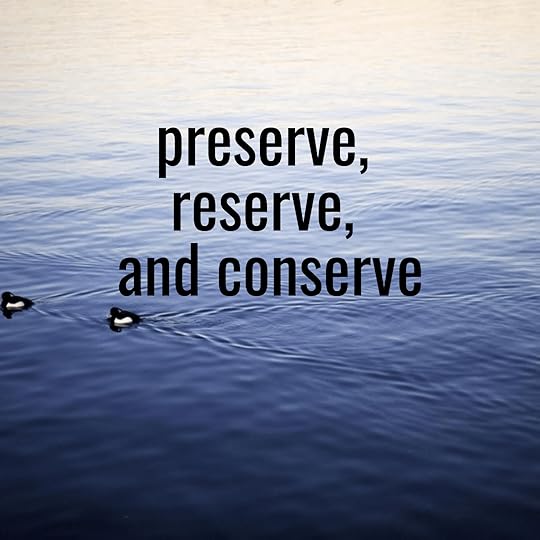
I have realized in the past week that self-care is something I need to plan for. Is something every educator needs to plan for. That no matter what we do, which role we play, we can always feel like we are not enough. Like there is not enough of us. But I have also realized that that is not true.
There is enough of us but just too much of other things.
There will always be more coming at us, no matter what we do. There will always be that one thing, that one opportunity, that little thing that someone just would love for us to do and if we could just squeeze it in that would be great.
But I don’t want to squeeze anything in.
I want to be fully present.
To give my best when I am there.
To step away when I am not.
To not apologize for taking care of me.
I have realized that the time you give should be a gift and if whatever you are giving your time to doesn’t feel that way then perhaps you shouldn’t be giving your time to it.
I have been reminded that saying no is not a privilege but a right.
I have been reminded that I am enough, but to stay that way, I need to preserve, reserve, and conserve.
And I have been reminded that too many of us feel the drain, feel the rush, feel the need to be everything for everyone and that we are killing ourselves in the process.
We don’t have to.
We just can’t forget that.
July 9, 2018
On Reader Identity and Its Importance
I was asked recently why the need to focus on reader identity. Won’t that develop normally if we just focus on skills and all of the things we do within our reading communities? In the past, I would have said, maybe, perhaps reader identity develops no matter what we do, now, however, my answer would be a little more complicated than that.
Yes, reader identity develops in whichever way with whatever we do in our classrooms. This is how we end up with the difference in readers. Those who love to read, those who tolerate it as a means to a purpose, and those who cannot wait to tell us just how much they hate reading.
But to develop a meaningful reader identity, one that goes beyond the obvious questions of are you a reader or not, we have to have teaching opportunities where students can explore what their reading identity is to begin with and then chart a specific course to further explore it and grow.
That means we spend an awful lot of time self-reflecting, discussing and also setting goals so that every child has a chance to answer thoughtfully, who are they as a reader. So that every child can leave our year together having a fuller sense of what it means for them to be a reader, particularly outside of school and our set reading environments. This discovery is what creates lifelong readers, but it won’t just happen for all if we don’t make it a point to actually bring it into our teaching. If we don’t actually plan for the development of all reading identities within our time together.
So where do you start? Well, I start with a survey (it can be found here or here ) not just so I can get to know the kids but so that they can start getting to know themselves.
Then we confer: what are their reading goals? No longer do I set the goals for kids, instead they reflect on the relationship and needs they have within reading and then set a goal. One that is meaningful and personal to their growth. Some need a lot of help uncovering what that is and others seem to know right away what they need to work on. We use the 7th-grade reading challenge to help them goal set as we discuss that for some quantity of reading is a great goal, while for others it is much more about habits and developing who they are.
And then we start the work. The reading, the lessons, the experiences that create our reading community. Woven throughout all of that though is the need to go back and reflect on the goal they have set and to help them process their own growth.
So every time I confer.
So every time we reflect.
So every chance we get, I ask, “What are you working on as a reader?” and let their answers guide our conversation.
Those who set a goal just to set a goal are quickly helped to try to come up with a goal that is more meaningful to them. Those who set a goal that doesn’t make sense are quickly prompted to dig deeper. And those who set a goal that they have little way to reach on their own, well, that’s where our teaching comes in.
It is within the constant conversation always circling back to the question, “Who are you as a reader?” that our students can start to piece together their answer. That they can start to understand the identity that they carry as a reader. That answer goes beyond their book likes, their reading minutes, their skills. It speaks to how they handle books, now just how much they read, but when they read, how they select what to read, and what they do with it once they are done. How they view reading within the broader scope of their lives and who they will be as readers one they leave us.
So whenever I am asked, why bother with student reading identity, I think of the students who started out simply telling me that reading was not for them but left us knowing so much more. That reading was for them if they found the right book, had the right place and took the time to read. That reading was for them because they had found meaningful moments within the pages of a book the previous years. That they perhaps would even consider reading outside of class now. This is where we see the change. This is where we do the work.
PS: Yup, I am still stepping back and doing less. This post felt like I should write it so I did. Who knows when the next one will come.
July 5, 2018
i am sorry
This is a personal post. I won’t be offended if you skip it. But as always, this little tiny space on the internet, is my place for the thoughts I carry with me and the thoughts I have right now are about this tiny space and the role I play.
Two weeks ago, I was working from home, probably checking email, Twitter, Facebook, or something else that required me to focus on my screen. My kids were home, doing something, and Oskar, my five-year-old, walked up to me and said, “Mom, you work a lot.” He then walked away.
For the past two weeks, these words have hit me hard, because he is right. I work a lot. I work all the time. I work early in the morning, in the car when my husband is driving, late at night after my kids go to bed. When I check social media, my mood changes. I withdraw from my family. I let the words of strangers affect my family as I get caught up in emotions I don’t need to have. I have lost count of how many times I have had to catch my husband up on something that happened on social media which is now pulling me away from my family. And if I am not working, I am thinking about work. About everything I need to take care of online, the comments, the tweets, the posts, the little stuff that comes with doing the work that I have chosen to do. Not my full-time teaching job, but my self-chosen extra work that has brought me into the lives of many others.
And while I am honored beyond words that anyone chooses to spend any time with any of my words, my ideas, or my projects, I also have no balance. I have high blood pressure. I have started having panic attacks. In fact, I had one earlier today started by an email.
Before all of this, this blog being read by others, this living in a very small public eye, I never had panic attacks. I didn’t fully understand what it meant to feel like you have disappointed strangers. I didn’t fully understand what it feels like to be seen as someone who had all of the right answers, or to be seen as someone who should just learn to keep her mouth shut. I never brought my computer with me on vacation. I didn’t need unlimited data just to keep up with all of the notifications, wants, questions and needs that pile up. I didn’t look at my to be read shelf as work.
I knew what it meant to be just Pernille, a goofy, introverted, yet outspoken woman who loved her life with all of her heart. Not Pernille Ripp who somehow has become someone I can’t live up to be.
Last week, I was supposed to speak at ISTE alongside some fantastic colleagues. I was excited, yet nervous. Once I got to ISTE though, I was overwhelmed, and not in a good way. There was personal stuff going on at home, I was not feeling well healthwise, and the panic started to creep in. How could I possibly live up to people’s expectations when I felt this awful? Then other stuff happened and I made the decision to go home. While it was the only decision I could make personally, it meant that I let others down. That I broke a professional promise. I never do this and yet I did it this time. If you are one of the ones that I let down by not being there, I am so sorry. If you waited in line, I am so sorry. If you are one of the ones affected by my decision, I am so sorry. I hope to make it up to everyone somehow.
But it speaks to my larger reality right now; my priorities are screwed up. I work too much. I worry too much. I give too much of myself to have enough left at the end of the day. And it is only getting worse. My doctor is telling me to stop and my kids are reminding me to listen.
So it is time for me to step back a bit. To do less work publicly, to share less, to not be so immediately available. To be just Pernille, the person who doesn’t have all of the answers necessarily. That only creates something because she cannot help it. That gives all of her when she is in a public space, but then steps back when she is private.
I find so much joy in the work that I get to do with kids, with adults, and I don’t want to lose that. I want to reclaim the joy. The experimentation. The carefree.
So if you don’t hear from me for a while, I hope it is ok. If I don’t take care of your question for a while, I hope it is ok. I will still be out there, sometimes on the road, sometimes behind my screen, but I can’t keep this up. I don’t want to keep this up.
Take care of yourself, it is time for me to do the same.
Pernille
Be a Reader Leader – What Administrators Can Do to Promote a Reading Culture
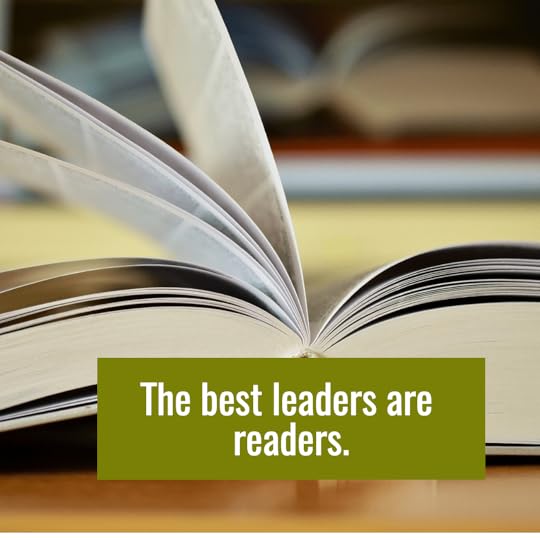
I originally wrote this post in 2015 and thought it needed an update, so here you are.
Dear administrators, whether principal, coaches, or anyone else who supports reading education outside of the classroom.
I have been pleading with teachers for a few years to please help students become passionate readers. I have given as many ideas as I could and directed toward the great minds that inspire me as well. I have begged at times, sharing the words of my students as proof that we teachers have an immense power when it comes to either nurturing a love of reading or killing it. There are so many things we teachers can do that will have a lasting effect. I even wrote a book compiling all of the lessons my students taught me when it came to creating a passionate reading community.
Discussing, learning from, and teaching other educators has been a part of my journey for many years now.
And yet, within my travels of teaching others, I am constantly reminded that it is not just the teachers that have an immense power over whether children will read or not. That it turns out that much of that power also lies within the realm of administration. In fact, one of the most oft-repeated statements I hear when teachers struggle to implement common sense reading components such as independent reading time is that their administrators do not support it. Yet, I also hear of how many of you, administrators, are doing incredible things to create schools that are seen as literacy communities that cherish the act of reading and becoming readers.
And so I write this post to share some ideas that have been shared with me so that others, in turn, may grow in their craft. So that the pursuit of a passionate reading community can truly become a community endeavor and not just lay on the shoulders of solitary educators who are trying. What are they doing? What can you do to foster a love of reading school-wide?
You can believe in choice for all. That means protecting the rights of students to read the books they choose. To help staff support this as well by speaking about choice and making sure not to put restrictive policies in place that will hinder a child from developing their own reading identity. That will stop a child from choosing a book they want to read. Teachers should not be the only ones choosing books for students, please don’t put them in that position. Instead, they should be working with students to learn how to self-select great books based on many things, not just their levels, lexile or other outside measures!
You can promote meaningful work. For too long, packets, projects and one process for all have dominated the reading landscape. And yet, if we ask students what turns them off from reading they tell us loudly and clearly that often it is the work that is associated with reading, not the reading itself, that pushes them away. So look at what is attached to all of the reading students do. Start conversations with staff about the literacy work that is contained within their classroom. Ask the students about the reading programs they are involved in and then change your approaches based on their words. We cannot change if we don’t ask the questions first.
You can buy books. Research shows again and again how vital having not only a well-stocked school library but also a full classroom library is to students becoming better readers. Students need books at their fingertips, not far away, and they need high quality, high-interest books that not only mirror their own stories but also provide windows and sliding glass doors to learn about the stories of others to quote Dr. Rudine Simms Bishop. This requires funding, so please allocate money every year to provide more books for your teachers. Before you purchase an expensive program to teach reading or more technology, please make sure that books have been purchased as well.
You can fight to have a librarian full-time in your building. Everywhere we are seeing libraries that have no librarians, yet a knowledgeable librarian can be the lifeblood of a reading community. I know budgets are being slashed, but the librarian should be seen as a necessity in schools, not as an unnecessary privilege. They are another reading adult that helps support the work of everyone in the school.
You can celebrate books read. Not the number of minutes logged or the points gained in computer-based reading programs. Not just those who reached an arbitrary goal set by an outside force. How about keeping a running tally of how many books students self-selected to read and then finished? How about you keep a display board of all of the picture books being shared in your school, yes, even in middle school and high school? How about every child is celebrated for reaching a goal that they set themselves? In fact, at the end of the year think of how powerful it would be if every single student gave themselves a reading award based on whichever milestone accomplishment they have reached. Celebrations should not just be for the few, they should be for all. Celebrate the right things, not the ones that can kill a love of reading.
You can protect the read aloud. When schedules are made there should be time placed for reading aloud. This should not be seen as a frill, nor as something that would be nice to fit in if only we had more time. All students at every age should encounter an adult that reads aloud fluently with expression to them every day. It develops their minds as readers and creates community. This should not just be reserved for special times in elementary school but should be protected throughout a child’s reading experience in school.
You can promote independent reading time. Students reading silently is not time wasted, it is one of the most important investments we can make in our school day for any child, any age. If you want children to become better readers, then give them the time to read. So ensure that every child has at least one class period where independent, self-selected reading is supported and protected. Often, this is the first thing to go when we plan curriculum especially when students are older, as we assume they will do it outside of school, yet reading statistics shows us this is not true. Therefore, we must plan, implement, and protect it during the school day for every single child.
You can hire teachers that love reading. And not just in the English department. I am amazed that there are teachers who teach literacy in any capacity that do not identify themselves as readers. This should not be happening. Years of experience shows that students will read more if we read as well and are able to create a book community where our love of reading is a cornerstone of what we do. Even when I taught non-literacy subjects, even when I taught science, the fact that I read for my own pleasure meant that our conversations were deeper, more engaging, and the students trusted me as a reading role model. Plus, how powerful to have students learn within a community of adult readers. When they can see every adult as someone who values literacy?
You can use levels for books and not for children. Too often the levels that a child reads at becomes their entire reading identity. Yet, that level is meant to be a teacher’s tool and not a child’s label to quote Fountas and Pinnell. That level should be a part of that child’s reading identity but not the thing that defines them. We should not have policies in place where students can only choose books that are at their levels, but instead, have policies that promote exploration of texts so that students have a natural chance to figure out who they are as readers. Confining them, even if meant to be helpful, will hurt them in the long run. And this includes leveling our school libraries and classroom libraries, a practice Fountas and Pinnell are against.
You can discuss students as individuals, not as data. Oftentimes, programs are purchased that support reading development that spits out a lot of data. And yet, as we are inundated with data we often lose sight of the child itself. We start to casually label children as struggling or low readers and then don’t question how that label ends up identifying the child. So be critical responders to the data you receive and keep the child at the front of the conversation, not the back. One idea for this comes from Dr. Mary Howard, who encourages us to always have a picture of the child we are discussing in front of us so that we remember the whole child and not just the data points.
You can support challenging texts being used. In order for teachers to truly create an inclusive library that mirrors the lives of all of our students, we need books that represent all of their stories. That means we need age-appropriate books about gender identity, racism, abuse, sexual identity, religious discrimination, and other harder topics. Yet, in many districts teachers are not protected when it comes to placing these books in the hands of children. This creates a dangerous vacuum where only certain stories are viewed as normal, which can lead to an increase in intolerance and hate. Establish a policy of tolerance, empathy, kindness, and understanding of others and apply it to the books that are in your school. Support teachers if a book is challenged. Understand the urgency of these stories being present in the classroom so that we can create a more understanding world.
You can support and promote the need for two types of reading experiences. For too long we have focused on the development of reading for skills, not for the love of reading. Yet, we need both types of experiences in order to fully develop as readers. Actively support your teachers in creating both types of reading experiences within their day and create a community-wide discussion of how to promote liking reading more, not just which lessons are needed to further their reading skills.
You can build a school-wide reading community. Celebrate books together, have book announcements, book giveaways, and have every staff member have a “just read” poster outside of their classroom or office. Give out book recommendations to students as you see them. Pass out books to those who need them. Host book clubs for staff and parents. Highlight the readers in your community and yes, highlight your own reading.
You can have tough conversations. Part of my job as a teacher is to grow and learn and while I think that most of my ideas are solid, I wish an administrator would have questioned me when I had students do reading logs and forced book reports a few years back. While the push-back may be hard to swallow, it certainly would have made me think. However, within those tough conversations, please do listen to the teacher as well. What are they basing their decisions on? Perhaps they are the ones who are right, perhaps not, but ask the questions and keep the bigger goal in mind; students who like to read!
What else can you do to create a school where the love of reading flourishes?
You can be a guest read alouder.
You can have books in your office for students to read.
You can share your own reading life by displaying your titles outside your office.
You can make assemblies and other fun events that celebrate literacy.
You can bring in authors.
You can promote reading literacy projects like The Global Read Aloud or Dot Day.
You can ask students what they are reading whenever you see them.
You can institute school-wide independent reading time.
You can speak out against poor literacy decisions being made within your district.
You can ask your teachers for ideas on how to grow as a reader leader.
You can ask your students what they need and then implement their wishes when possible.
You can ensure that your most vulnerable readers are placed with the best teachers.
You can promote the use of picture books at every level.
You can support new ideas within literacy practice, even if they fall outside of a program you may be implementing.
You can keep fidelity to the kids, and not the program to quote my incredible assistant superintendent, Leslie Bergstrom.
You can provide audiobook subscriptions.
You can actively develop your own reading identity and then share that journey with others so that they can see that there is not just one way to be a reader.
You can reflect together with your staff on what may be hindering the love of reading from growing and then do something about.
You can believe that every person is a reader on a journey.
You can send your teachers to professional development with the likes of Kylene Beers, Cornelius Minor, Sara Ahmed, Kate Roberts, Donalyn Miller, Penny Kittle, Kelly Gallagher and any other of the incredibly talented literacy experts that inspire us all.
There are so many things that fall within your realm, please help us teachers (like my principal Shannon Anderson does) protect the love of reading that students have and nurture it as we teach. You can choose to create passionate reading environments or you can support decisions that smother them. The choice is yours.
July 1, 2018
Come Teach Again – On Teacher Guilt and the Platitudes that Grows It
For a while, I have been noticing a trend in my Twitter feed, or rather what Twitter wants me to see. If I ever cross into “Moments” or “Search” it seems that the same white males keep popping up with Twitter telling me that if I follow education then I surely must be interested in their statements. At times, it is right, many who are no longer in the classroom have fascinating ideas to share, research to ponder, and resources to go through. And yet, there are times, and seemingly more so recently, that who I am supposed to be learning from in education keeps being the same white, male, non-classroom teachers that keep telling me, this classroom teacher, what I need to do to be the perfect teacher.
I have quietly rolled my eyes. Seethed a little. Showed friends how funny it is that it seems to be the same people that others also see when I ask them to cross into that stream. At times I have been baffled by the statements shared, even if well-meaning, as they seem to be written more with a re-tweet in mind than any actual learning.
This morning, as I leisurely browsed Twitter on my vacation, I came across this statement.
[image error]
A pretty typical example of the platitudes that are served up daily to all of us educators who spend time on social media. Often, statements like this get liked thousands of times, retweeted to the nth degree. Shared as if this is the gospel truth, pushing teachers to finally realize that they should teach as if they actually care about their job. Seemingly wanting us, in this case, to finally realize that since everything is controlled by teachers, then surely we could create the most engaging student experience if we just worked a little harder.
Can we stop for a moment and unpack this just a little?
I used to lose sleep over how I seemingly failed my students. How even though I spent hours planning engaging lessons, how even though I brought my very best, how even though I walked so many steps in the classroom checking in with each student that my knees and hips hurt at the end of the day, it didn’t always seem to matter. That every day there seemed to be at least one kid who was quick to tell me just how bored they were. How much they didn’t like what we were doing. How much they wished they were somewhere else.
Despite my planning.
Despite my strategies.
Despite my positive urgency to reach all children.
And so when these supposed thought leaders, who seem to be fairly removed from the day to day experience of what it really means to teach, then tell us that everything our students experience is controllable by us, I cannot help but wonder how many teachers end up feeling like failures just like I did. Despite all of the work they have done. Despite everything they are striving to be on a day to day basis. Despite how much they already pour of themselves into this profession because we know how much it matters.
How is that furthering anything good for educators? Because the teacher guilt is a real thing. Because teacher burnout from not feeling like we are enough is a real thing. Because we already work in a profession that at times is showcased as everything that is wrong with this country.
It is hard to sometimes believe you are of any kind of worth when you are constantly reminded me of all the things you should be doing if only you were a great teacher. In fact, last year, I expressed my regret to students in how I seemed to fail to engage them all during a particular unit and that I wished I was a better teacher for them. How I was really trying and yet seemed to not live up to the high expectation I had placed for myself. In that moment of vulnerability, I will never forget what several students told me.
It’s not your fault, Mrs. Ripp, sometimes we just don’t want to.
It’s not your fault, Mrs. Ripp, because we are kids and it is natural that we don’t always like school.
It’s not your fault, Mrs. Ripp, because we need to bring it too…
They need to bring it too.
I love the wisdom of kids.
Because that’s it. While we, as educators, should bring our very best every single day. While we, as educators, should plan engaging lessons for all. While we, as educators, should teach as if every moment matters – because it does – we are not enough.
We have to have a partnership with students when it comes to their engagement. To their empowerment. To their investment into our classrooms. We have to bring our best and expect our students to bring their best as well. We have to have an agreement with students that we will all try to rise to the occasion together, and that there will be days where that may not happen. And that does not mean we have failed, but just that we will try again the next day.
My job is not to entertain my students, my job is to teach, and while the two are not mutually exclusive, I have to continually remind myself of what my purpose is as the teacher in the room; to help them become more invested, engaged, and critical participants and creators of their own educational experience. That does not just rest on my shoulders, but the shoulders of our students as well. We start conversations about what real learning looks like and then we set the expectation of how we will provide the foundation for them to stand on, but that they must do the building. Sometimes with us and sometimes without. That we can only bring our very best but then it is up to them to make it matter. To make it worth their time. That for them to have the very best educational experience, they have to invest as well. Sometimes despite the seemingly insurmountable odds, they face in life.
To think that I, as the teacher in the room, controls all of their attention and levels of engagement is simply false. It supports the notion that students are mere pawns and not there as active investors in their own learning. It supports the notion that school is something we do to children rather than something they experience.
So what if instead of listening to some who may have great things to share but are not actually doing it themselves, and haven’t for a really long time, we instead had conversations with students about how we can increase engagement and attention in our classrooms? How about instead of pretending that everything is under the control of teachers, we actually realized that the very best classrooms are those where students share the control and thus have to invest to actually learn?
Because frankly, I don’t need more people outside of the day-to-day realities of what it means to be in a profession that is constantly attacked for not being enough, telling me how I need to do more. To that I say; come teach again, then we can discuss it, my students and I have plenty to share.
If you like what you read here, consider reading my newest book, Passionate Readers – The Art of Reaching and Engaging Every Child Also consider joining our book club study of it, kicking off June 17th. This book focuses on the five keys we can implement into any reading community to strengthen student reading experiences, even within the 45 minute English block. If you are looking for solutions and ideas for how to re-engage all of your students consider reading my very first book Passionate Learners – How to Engage and Empower Your Students. Also, if you are wondering where I will be in the coming year or would like to have me speak, please see this page.
My Favorite Picture Books of 2018 (So Far)
Every year I post an end of the year favorite book list but I thought this year, inspired by Colby Sharp, I thought it would be fun to add the titles as I discovered them. Now, these may have come out in 2018 or simply have been read by me in 2018. So here you are, in no particular order, my favorite picture books of 2018. To follow along with these live follow me on Instagram.
The list of favorite chapter books for 2018, can be found here.
To see all of our favorite books through the years, go here.
Fiction
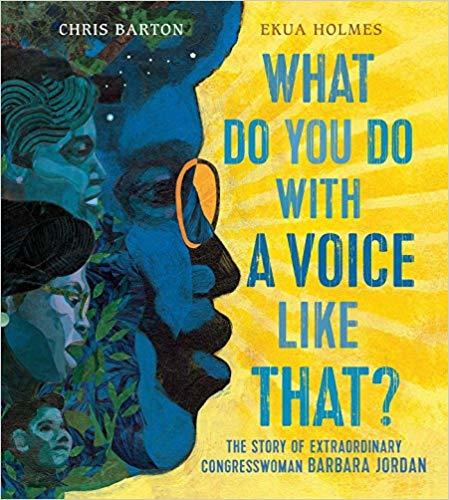
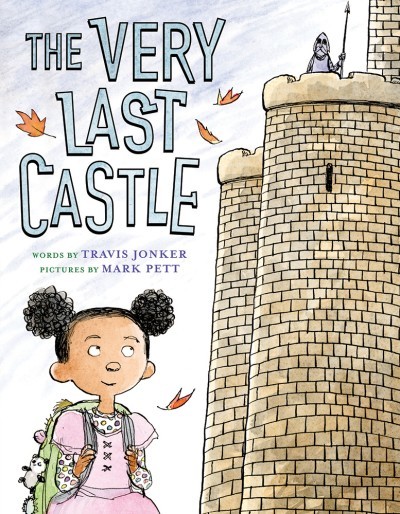
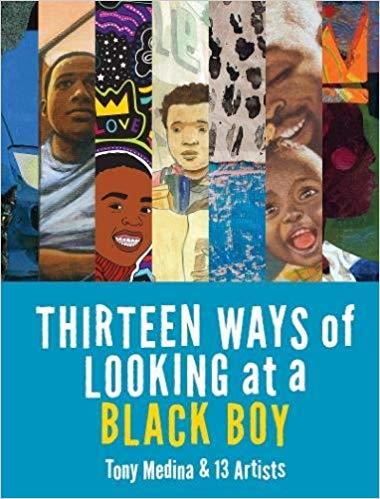
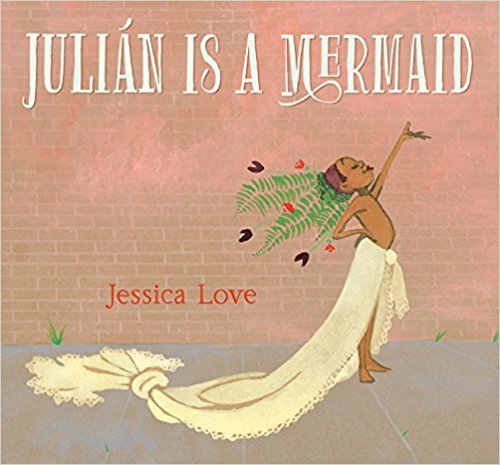
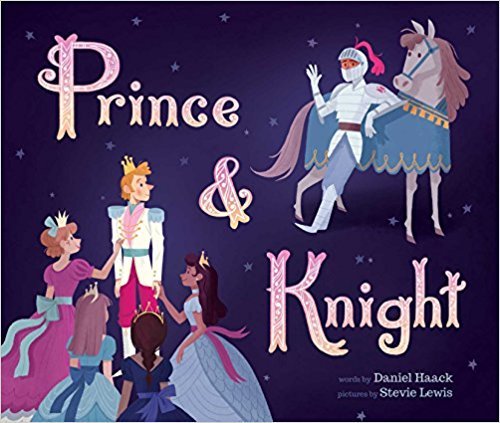
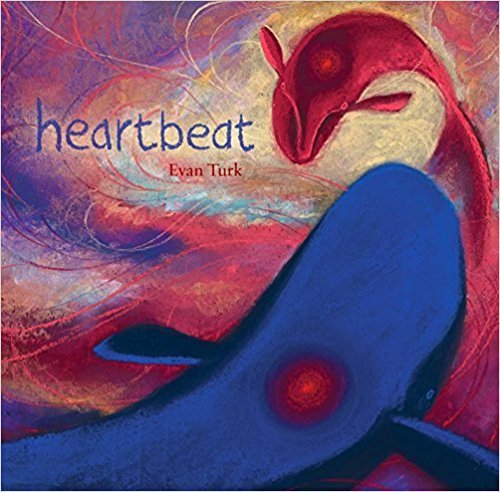
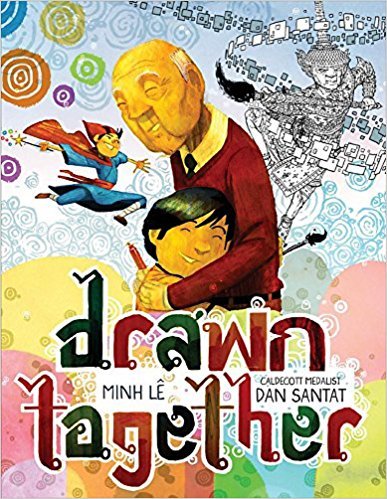
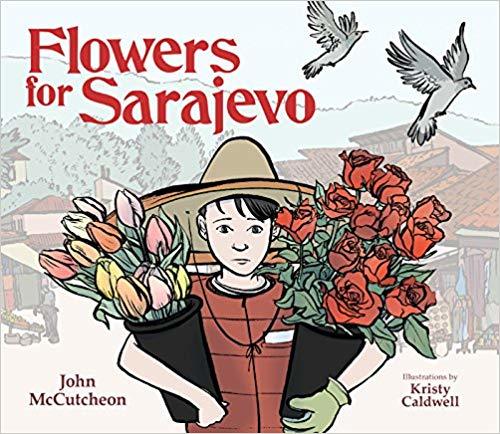
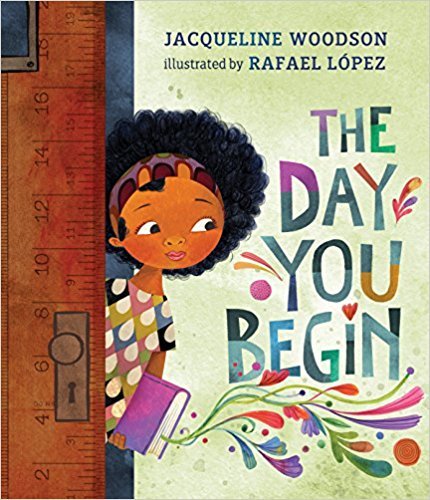
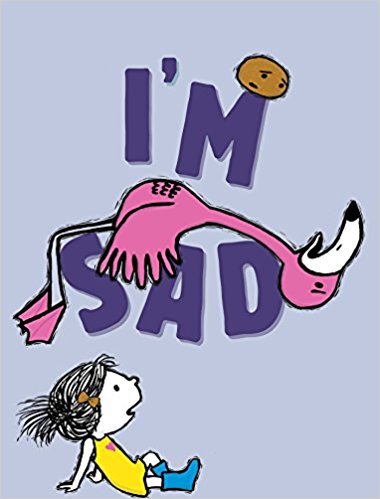

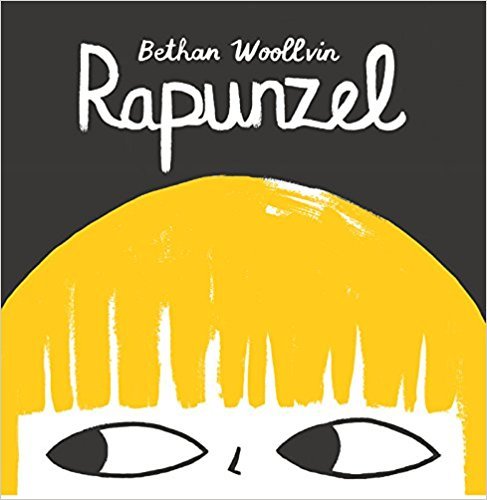
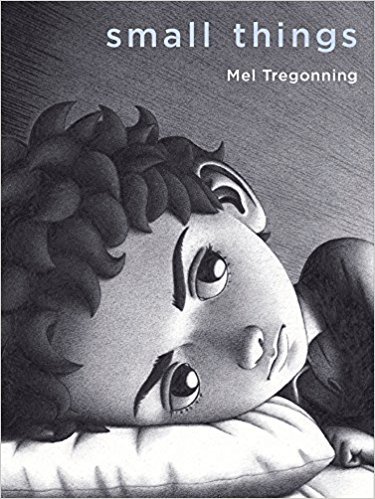

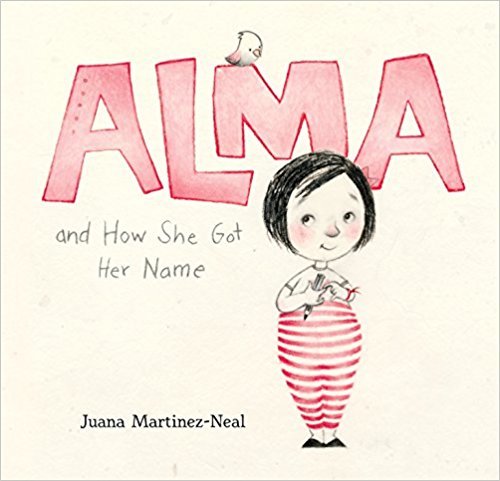

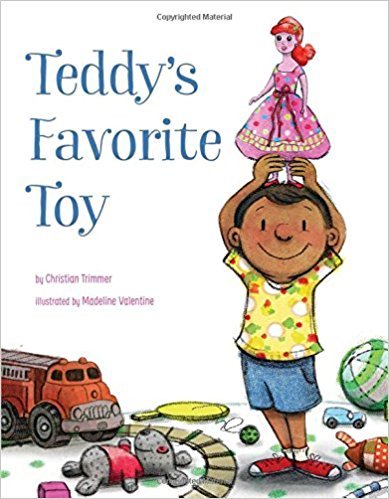

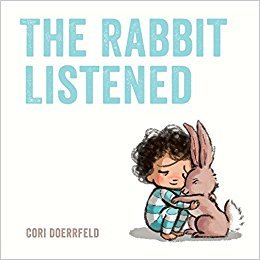

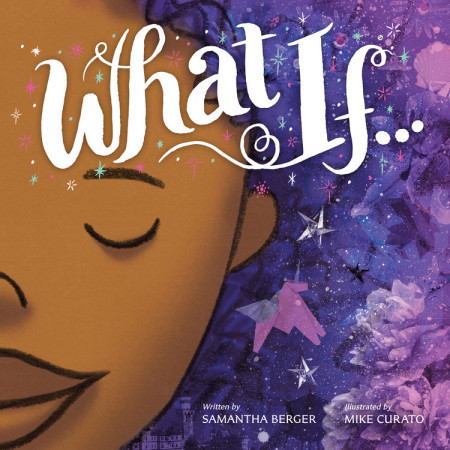
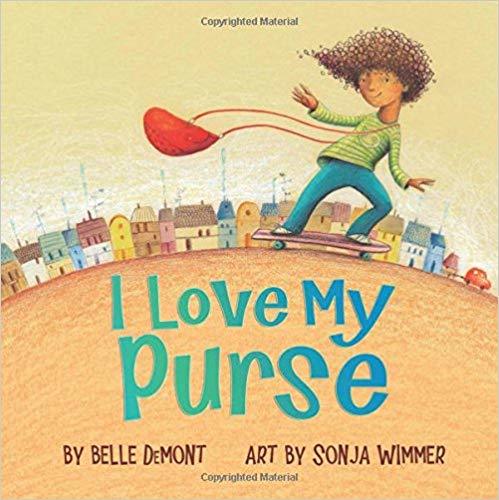
Non Fiction
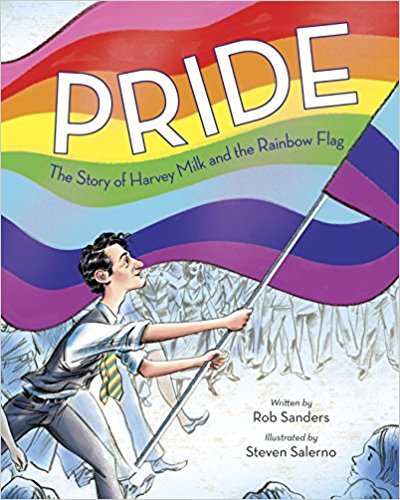
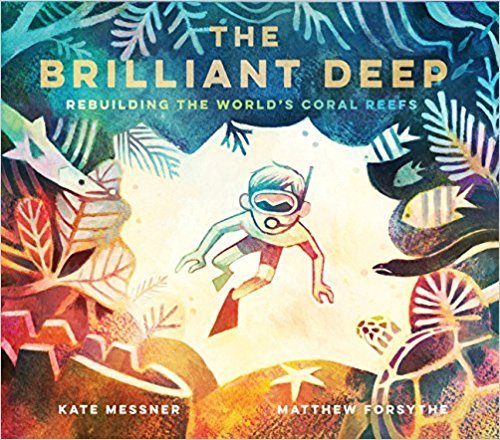

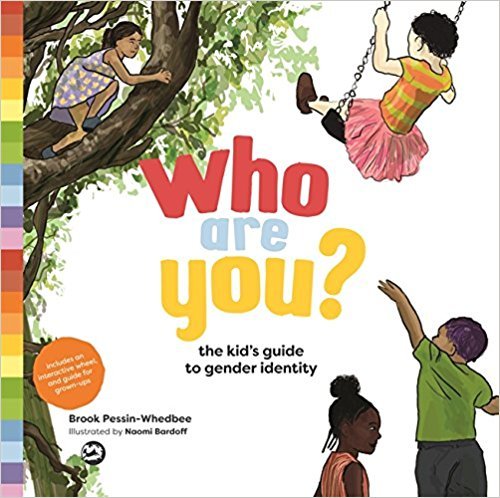
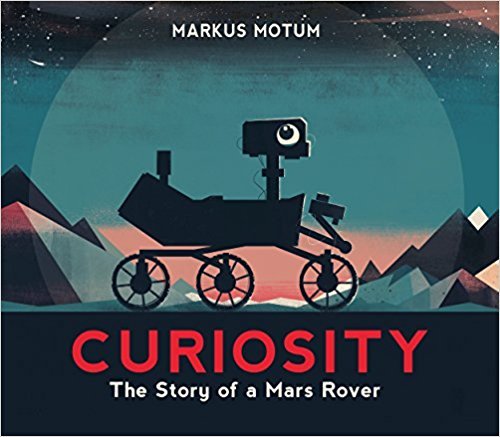
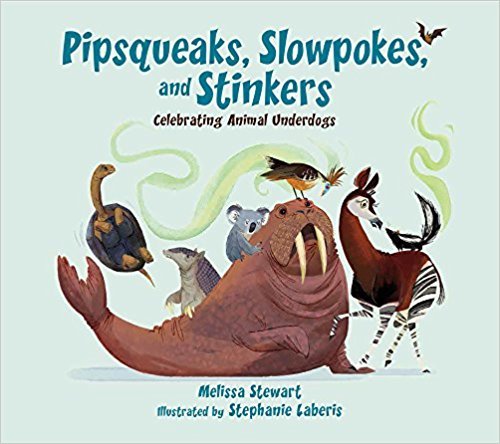
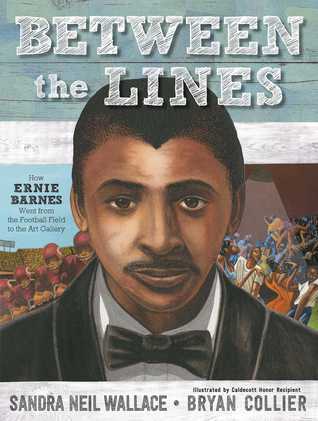
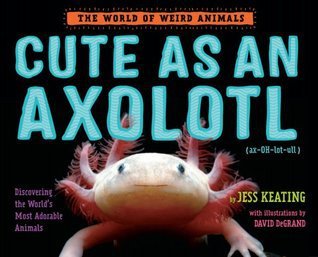
June 30, 2018
My Favorite Books of 2018
Every year I post an end of the year favorite book list but I thought this year, inspired by Colby Sharp, I thought it would be fun to add the titles as I discovered them. Now, these may have come out in 2018 or simply have been read by me in 2018. So here you are, in no particular order, my favorite books of 2018. To follow along with these live follow me on Instagram.
PS: My Favorite Picture Books of 2018 will be a separate post.
Middle Grade or Younger
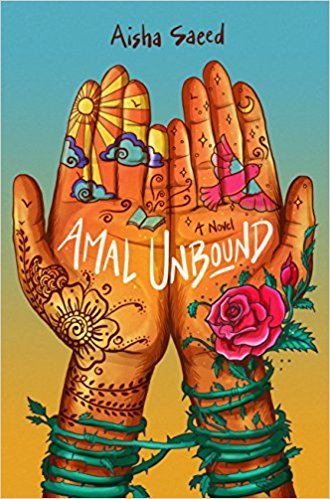
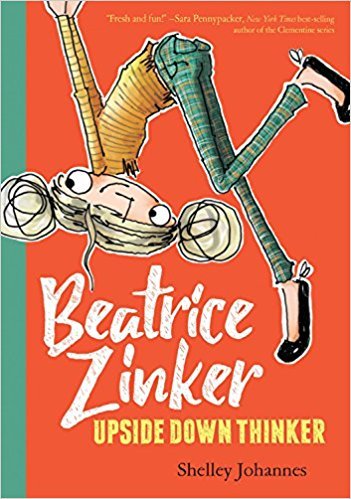
Beatrice Zinker, Upside Down Thinker by Shelley Johannes

Ghost Boys by Jewell Parker Rhodes
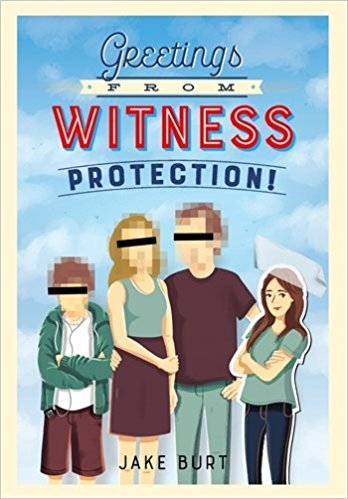
Greetings from Witness Protection by Jake Burt
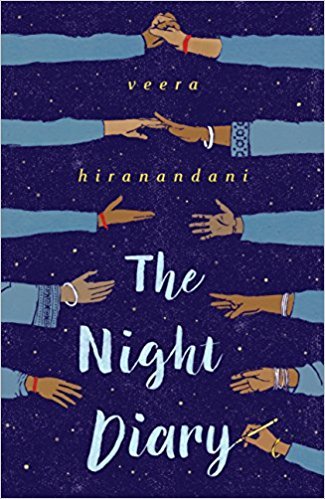
The Night Diary by Veera Hiranandani
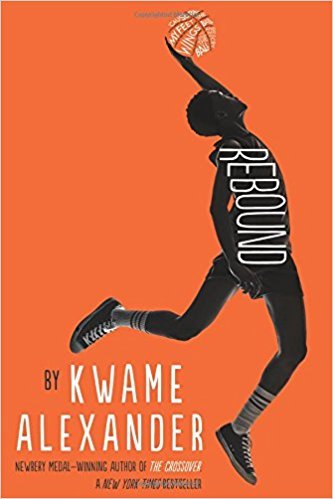
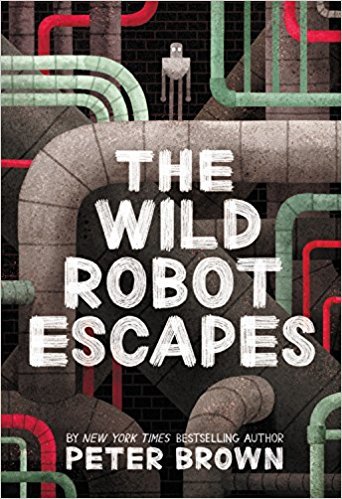
The Wild Robot Escapes by Peter Brown
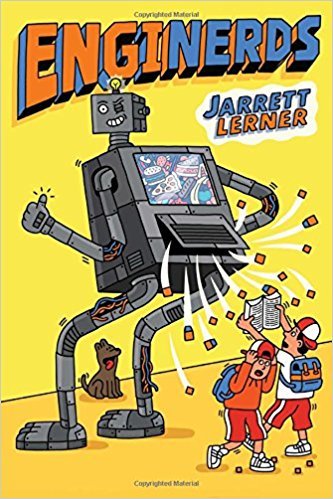
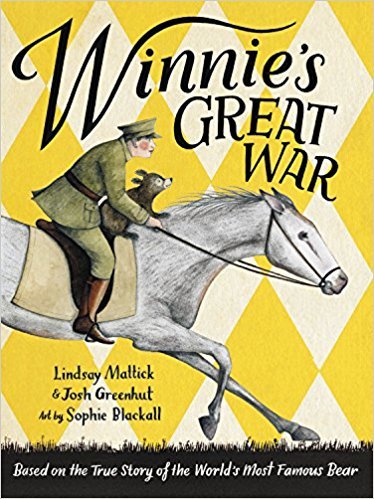
Winnie’s Great War by Lindsay Mattick and Josh Greenhut, art by Sophie Blackall
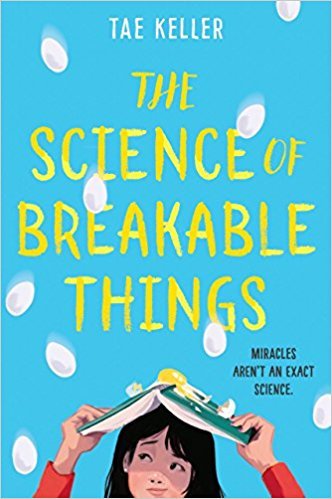
The Science of Breakable Things by Tae Keller
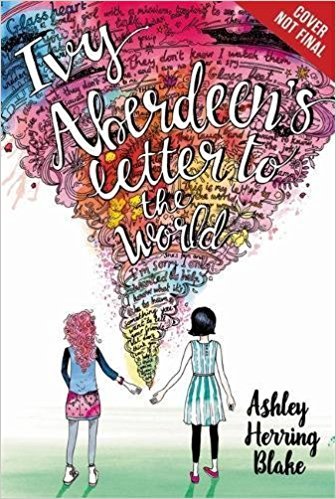
Ivy Aberdeen’s Letter to the World by Ashley Herring Blake
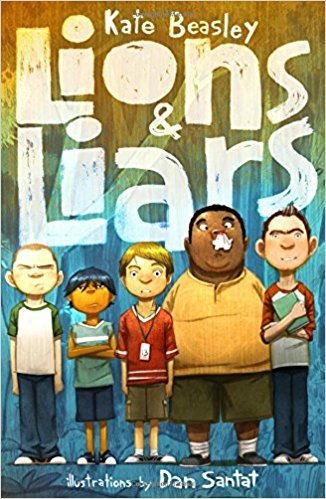
Lions and Liars by Kate Beasley
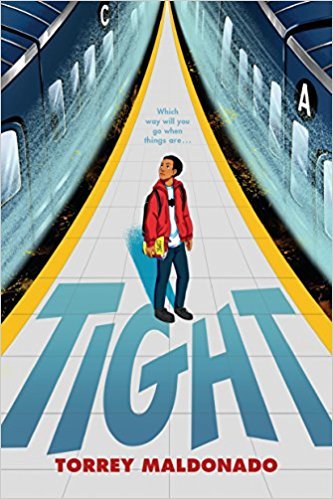
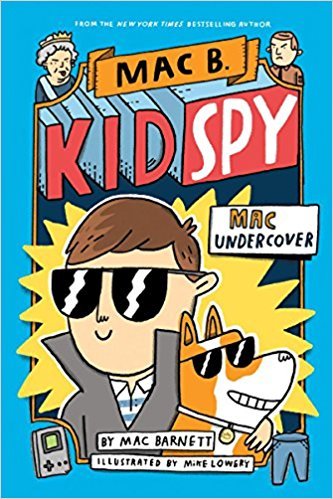
Mac B. Kid Spy by Mac Barnett illustrated by Mike Lowery
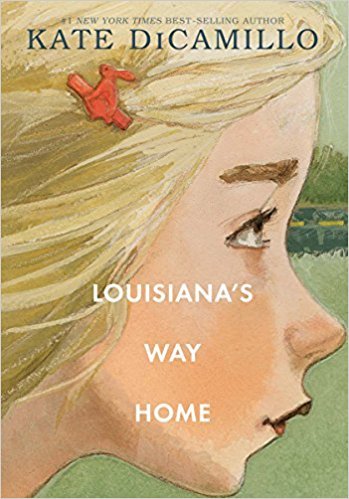
Louisiana’s Way Home by Kate DiCamillo
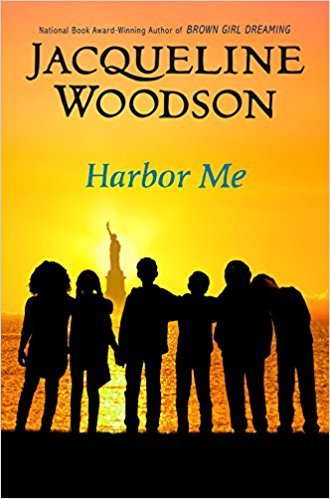
Harbor Me by Jacqueline Woodson
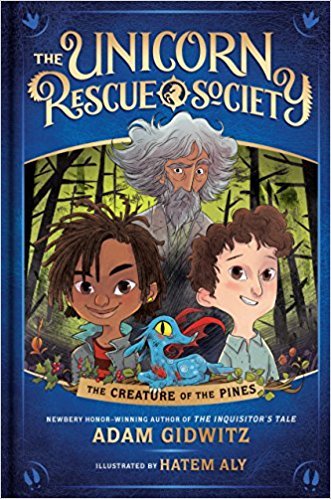
The Unicorn Rescue Society by Adam Gidwitz, illustrated by Hatem Aly
Graphic Novels
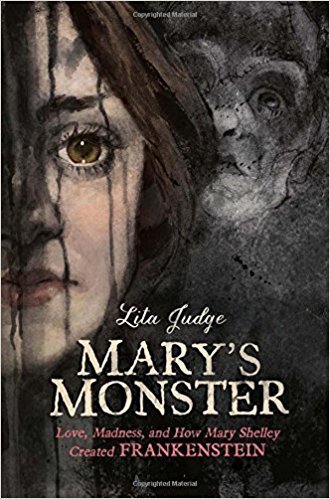

Speak – The Graphic Novel by Laurie Halse Anderson
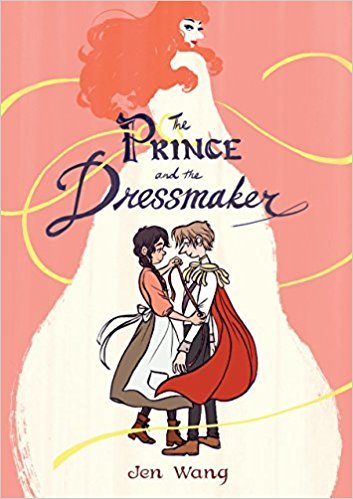
The Prince and the Dressmaker by Jen Wang
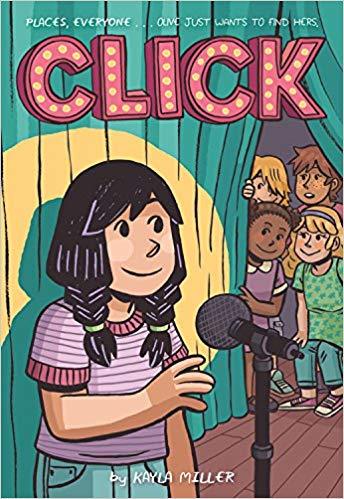

All Summer Long by Hope Larson

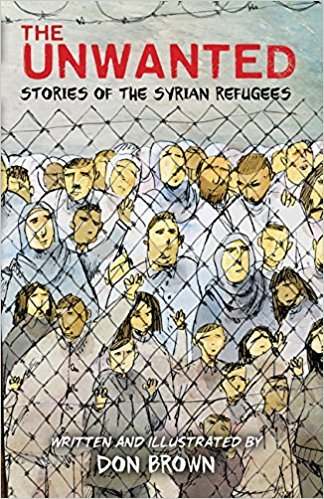
The Unwanted: Stories of the Syrian Refugees
Young Adult

Dread Nation by Justina Ireland
[image error]
One of Us is Lying by Karen McManus
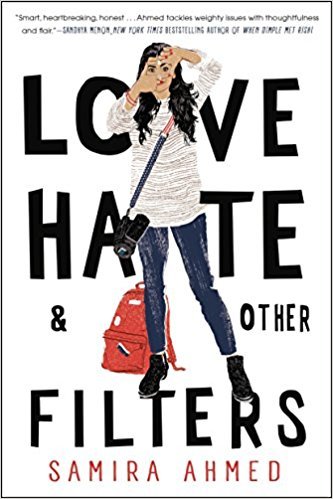
Love, Hate, and Other Filters by Samira Ahmed

Girl Made of Stars by Ashley Herring Blake
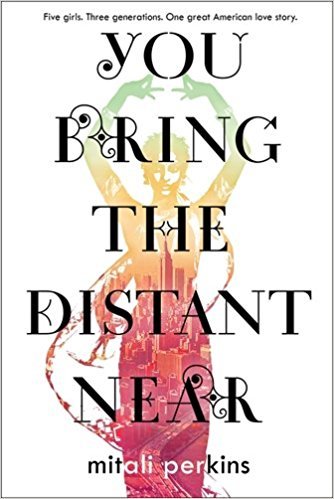
You Bring the Distant Near by Mitali Perkins
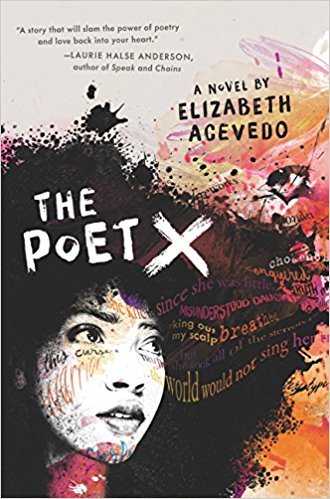
The Poet X by Elizabeth Acevedo

Children of Blood and Bone by Tomi Adeyemi

The Wicked Deep by Shea Ernshaw

Stalking Jack the Ripper by Kerri Maniscalco
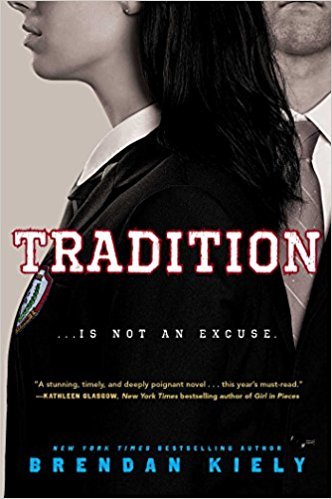
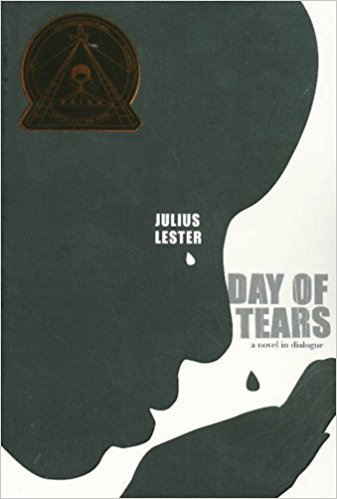
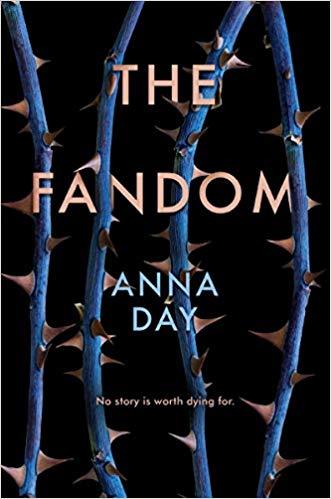
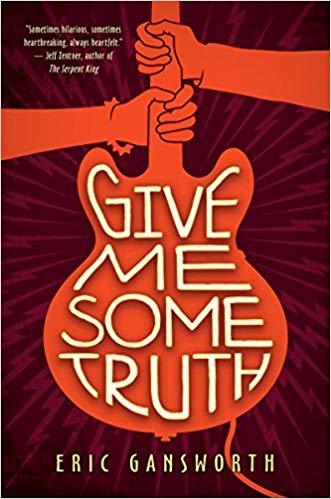
Give Me Some Truth by Eric Gansworth

Tyler Johnson Was Here by Jay Coles

#Murdertrending by Gretchen McNeil

Trail of Lightning by Rebecca Roanhorse
Non-Fiction

Dog Days of History by Sarah Albee


Hey, Kiddo by Jarrett J. Krosoczka
June 29, 2018
How I Am Growing – A Few Professional Development Books to Boost Your Work
Ah, summer. Lazy days spent at the pool. Trips and travel. Sleeping in and ice cream. Kid movie nights and dates with my husband. Yet, every educator also knows that summer can mean growth, new ideas, new energy as we unpack the last year and focus on the next one. Sometimes it comes from stepping away, from reflection, from taking a break from all things education. Sometimes it comes in the form of a neatly wrapped package, a new book to help us see our world a little differently. So what am I reading this summer to help me develop my craft?

We are toying around with the idea of doing one whole class novel this year so when I saw Kate Roberts’ new book, A Novel Approach – Whole-Class Novels, Student-Centered Teaching, and Choice I knew I had hit the jackpot. But I am going to let you in on a little secret; you don’t have to even be considering whole class novel for this book to apply to you. Kate’s wisdom is for all English teachers and her ideas have already shaped my thoughts for the year ahead.

When Penny Kittle and Kelly Gallagher announced to the world that they were working on a book together, I was so excited. After all, I have looked to their work for a long time as a guide for how to grow my practice. Now with the release of 180 Days – Two Teachers and the Quest to Engage and Empower Adolescents the wait is over. I get to present alongside Penny Kittle and Donalyn Miller at NCTE this year – yes, really – so I cannot wait to see her discuss these ideas live!

While I love our classroom library and feel like there are a lot of great ideas within it, I am always looking for tips on how to improve it. Enter Tammy Mulligan and Clare Landrigan who with their new book, “It’s All About the Books – How to Create Bookrooms and Classroom Libraries that Inspire Readers” set out to provide us with just that; more practical ideas for how to utilize the books and space we already have to increase student engagement.

I am not good at teaching grammar, there I said it. I know how to teach it within one-to-one conferences, but how do you teach it to the whole class so that it actually transfers into their work? Enter the genius that is Jeff Anderson who had to figure out just that. Lucky for us, he then decided to write a book about it! I have heard nothing but positives about Mechanically Inclined – Building Grammar, Usage, and Style into Writer’s Workshop.

One of my largest areas of growth is centered on equity work and how I can be a better teacher and human being in America today. I am so grateful for the leadership of Valeria Brown and her group #CleartheAir. They have recently announced their book club titles for the upcoming year and are starting with Carla Shalaby’s Troublemakers, Lessons in Freedom from Young Children at School. I cannot wait to unpack this book with them.

The next book in the #CleartheAir book club is White Fragility – Why It’s So Hard for White People to Talk About Racism by Robin Diangelo. The power of the title alone means I cannot wait for September to come around. There is also an October book, but I am not sure I will have time this summer to read it so I will save that title for a later post. I highly encourage you to join the conversation!

And finally, the book I seem to be recommending the most this summer is still Sara Ahmed’s Being the Change – Lessons and Strategies to Teach Social Comprehension. This book shaped our entire 4th quarter together and it was incredible. This book will continue to shape the lessons I do with my students as we unpack our identities and what it means to view the world through the lens that we view it with.
So there you have it. While I am also reading as many children’s books as I can devour, the growth I need as a teacher is coming from these few titles. I cannot wait to be changed because of these books! What are you reading this summer?
June 25, 2018
In These Divided Times
Yesterday, I was given the opportunity to speak for 5 minutes on the ISTE small stage. I was given five minutes to share something I am passionate about. Something I care about. I knew I wanted to discuss technology. I knew I wanted to discuss division, I thought I would discuss the Global Read Aloud, and yet as I started writing I realized the inherent opportunity I had been given to speak about something I am still learning about and growing within. Something I have spoken about before but not at ISTE, not in a tech space. So yesterday, I delivered the following Ignite to a full room. I don’t know if my words will matter, I never do, but I was nervous and proud to speak from the heart. Hopefully, I didn’t screw it up too much. And while some told me it was a brave speech, I am not so sure about that, after all, I am pretty protected within my privileged place. It was truly the least I could do as we continue to work toward a better world for all, not just those of us with privilege.
PS: Some of the words were repeated from my NCTE speech but they fit here as well. I also think a video will be made available at some point and will add a link here.
I was clutching the steering wheel. The red and blue lights behind me flashing. My heart in my throat. In my head, I kept wondering what I had done. I knew I had followed the speed limit, used my blinkers. And yet, I was getting pulled over and I was frozen.
As the police officer walked up, I was scared. Not for fear of a ticket, but because I didn’t have my green card on me. That little card that grants me the permission to be here as a lawful immigrant. That little card that I am supposed to carry on me at all times, in case the police, or ICE agents, or even strangers ever question whether I have the right to be in the US.
I didn’t have it. It was at home. She came up to my window. “License, registration please, do you know why I’m pulling you over?” My brake light was out. That was it. Get it fixed or get a ticket – not questioning, not deportation. She thanked me for my time. And then she walked away.
She never asked about my green card. She never asked if I was here legally. She never even thought to ask.
I was raised in Bjerringbro, Denmark, but my mother had a wandering heart and at the age of six, she moved us to inner-city San Francisco. I navigated not understanding what someone said to me when they spoke. Figuring out how to find the bathroom when you don’t know how to ask to leave, how to make friends when you don’t speak the same language, how to show I was smart even if I couldn’t communicate it.
And just when I felt like I had mastered this new culture, this new language, this new me, we went home. Becoming Danish once again, rather than a kid from a foreign country. But when you see me; Do you see a woman whose first language is not English? Or do you just see my white skin? Hear my American English and assume the rest?
When I was 18, we moved again. July 1998, I walked up to the counter in Logan Airport and declared myself an immigrant. Alone and clutching my sealed papers, the officer took the papers and led me to a small room. After what felt like forever, he finally handed them back, said; “Welcome to America” as he led me out into what felt like a whole new world.
For 20 years no one has ever asked me for my papers again. I have walked freely wherever I wanted to without being questioned, without being asked where I am from, without anyone asking me where I was born, all because of how I look. That is white privilege,
When I wrote about how I am never assumed to be an immigrant, someone replied; “Well, that is easy to understand, after all, you look like an American.”
Let’s think about that for a moment. How can I look like an American when I do not have a single drop of American blood in me? How can I look like an American when my first language is Danish and not English? How can this Danish girl be handed so much privilege – my skin of course.
You see, my family and I are so white we are like a caricature of whiteness, blonde, blue-eyed and tall. I was born white, it is who I am, but I am on a journey to use my innate privilege to be something more. Not just an ally, but a fighter, and technology is my weapon.
My students and I have taken the curriculum that the world has handed us and tried to figure out where we fit into the world. We have used books and computers to connect to the world. Web cameras, videos, and apps to not just share our work but to learn more.
Yet when a student asked what does refugee mean and another child answered, it means the enemy, it was a stark reminder of the work that still needs to be done. On the urgent need to use technology so that we can make our own decisions based on actual experience and not just hearsay and biased opinions. Use it so that those of us, who live with privilege, can be a part of the fight for a more just world.
Because let’s face it, I am privileged because I get to be afraid of the type of reaction my teaching may cause if I continue to teach about inequity. If I continue to teach what it means to be privileged. I get to be afraid for my job and I get to choose whether to have these hard conversations or not. But the truth is, there should be no choice. We, as teachers, are on the front lines of writing the future narrative of this country. Of this world. Ugliness and all. We are the gatekeepers of truth, so what truth are we bringing into our classrooms?
Where is our courage when it comes to being a part of dismantling the fears that drive us apart because It is not enough to bring in devices, the latest gadgets, without using them to learn about others. To understand others. To have the tools to dismantle our prejudiced world but then choose to do nothing to change the world that we live in.
We, as people with privilege, must use technology to create more opportunities for the students to do the hard work. To create an environment where they can discover their own opinion. Where they can explore the world, even when it is ugly so that they can decide which side of history they want to fall on.
So look at the power of the tools you have at your disposal. Look at what you can do with a camera. With a computer. With your voice and your connections. Look at whose voices are missing in your classroom. Look at who your students need to meet so that they can change their ideas of others.
We say we teach all children, but do we teach all stories? Do we teach the whole truth, and nothing but the truth, or just the sanitized version that will not ruffle any feathers? I can choose to bring others into our classrooms so that their stories are told by them. I can choose to model what it means to question my own assumptions and correct my own wrongs.
What if the next time a child made a statement that divided rather than united, instead of scolding them, we used a camera, a microphone, and others as a way to start a conversation. What kind of world could we be? What kind of history would we write?
[image error]
June 24, 2018
But Do They Run Into Your Classroom?

For eight years I have been sharing my thoughts on this blog.
Eight years of good.
Eight years of not so good.
Eight years of simply needing to get it out so that my brain could process whatever it was and move on.
Eight years of trying to be more than I was. And so there is something that still needs to be said, that has been driving me crazy for a long, long time. That makes me feel like a fraud, like a charlatan teacher who probably doesn’t really have the right to share anything about how anyone else should teach. What no one ever told me before I became a teacher was how there would be this unbelievable pressure to be an amazing teacher. To be the kind of teacher that truly changes lives. To create the type of environment that students cannot wait to be a part of. What no one ever told me before I became a teacher was how much social media would lead me to believe that I was doing it all wrong, most of the time, because my students are not those students that love school.
It is fed by the statements that surround us as teachers…
“If they didn’t have to be there, would they really show up?”
“Students should be running into your classroom not running away…”
“If they don’t love it, then you are doing it wrong…”
And while I get the sentiment behind these statements, I also think of the danger of them. The unattainable versions of reality that really none of us can ever live up to. These notions of creating such over the top unforgettable classroom experiences that make kids want to run into our schools, choosing us and our classroom above everything else. Every. Single. Day. Who can live up to that?
For ten and a half years, I have chased the mirage of being a perfect teacher. Of being the type of teacher that created those types of experiences that would make students flock to our classroom. That would make students want to come to school. And while there have been days where it almost felt like that, I have never achieved it, because let’s face it, it is a completely unrealistic notion. And it is a notion that are driving teachers to feel as if no matter what they do, no matter how hard they work, they will never be enough. They will always be lacking. How exhausting and debilitating is that?
So I am going to give it to you real straight because that’s what I always try to do; most of my 7th graders would probably rather hang out with each other than walk through our door. Most of my 7th graders would not run into our classroom if given the choice. They would probably rather sleep, watch Youtube, or simply hang out.
And I am okay with that.
Because that’s normal development. Because it is okay for our classroom to be low on their choice of experiences. Because it is okay for our classroom to not be something they think about when not in school. Because it is okay for kids to not be excited about the idea of going to school.
What is not okay is for them to hate it once they do get in our rooms. There is a big difference.
And so that is where we do the work. To create experiences that make students want to engage with our learning. That makes students feel as if they matter once they are there. That makes the time fly, the minutes pass until the next class, where they can hopefully experience that again.
So while most of my students would probably not volunteer to come to our classroom, once they are there, many of them love it. Many of them love what we do, who we are, and how we grow. Many of them would choose to stay once there. And to me, that is what matters.
So the next time you hear someone state, “But would they choose to come?” It’s okay to say, “Probably not” and not feel like a horrible teacher because what you realized is that the question was wrong all along, not you. Because what you realized is that you can teach your heart out and still have a hard time competing with everything that surrounds young people these days. Because what you realized is that the question should have been, “If given the choice would they choose to stay?”
And to that I can honestly answer, “Yes, most of the time they would…”
It turns out that perhaps I never needed to be a perfect teacher, I just needed to be real.
If you like what you read here, consider reading my newest book, Passionate Readers – The Art of Reaching and Engaging Every Child Also consider joining our book club study of it, kicking off June 17th. This book focuses on the five keys we can implement into any reading community to strengthen student reading experiences, even within the 45 minute English block. If you are looking for solutions and ideas for how to re-engage all of your students consider reading my very first book Passionate Learners – How to Engage and Empower Your Students. Also, if you are wondering where I will be in the coming year or would like to have me speak, please see this page.



